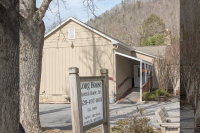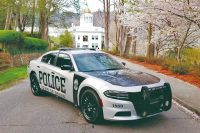A sparrowing we will go
For a bunch of “little ole ladies in tennis shoes,” birders are a hardy lot. Gone is the green of spring and summer, and with it go the scarlet of tanagers, the indigo of buntings, the blue of grosbeaks and the rainbow of multicolored warblers. With us are the browns and grays of winter and the sparrows.
And sparrows are enough to get birders afield on those winter days, peering into brambles and fencerows, trudging across fields and meadows and slogging along the edges of wetlands.
Winter rarities and lingering migrants not withstanding, there are nine species of sparrows one is likely to encounter, in proper habitat, across Western North Carolina during winter. Three — song sparrow, chipping sparrow and field sparrow — are year-round residents. They are joined by vesper sparrow (uncommon), white-throated sparrow, white-crowned sparrow, swamp sparrow, savannah sparrow and fox sparrow.
Two places automatically come to mind when I think of sparrows – Tessentee Farm and Kituwha (or Ferguson Fields). Tessentee is owned by the Land Trust for the Little Tennessee. More than 60 acres along Tessentee Creek and the Little Tennessee River surround the historic 1890 farmhouse. Diverse habitats like a red cedar savannah, wetlands, a river canebrake and former farmlands make Tessentee ideal sparrow habitat.
To get to Tessentee, follow U.S. 441 South from Franklin about 7 miles, turn left on Riverside Road for a half mile, crossing the river, then south on Hickory Knoll Road for 1.75 miles. There are trails at Tessentee, and it is open to the public. For more information contact LTLT at 828.524.2711.
Related Items
Another prime sparrowing venue in the region is Kituwha, the legendary homeland of the Eastern Band of Cherokee Indians. Kituwha, a.k.a. Ferguson Fields, is located along U.S. 19, in Swain County, between Cherokee and Bryson City. The 300 or so acres of farmland were purchased by the EBCI in 1996. Kituwha or Kituwah — the spelling seems interchangeable — lies along the Little Tennessee River. There is a wetland (the size of which depends on who is winning the beaver wars at the time), fencerows and agricultural land along with the riverbank to provide great habitat for sparrows.
A good field guide is handy while sparrowing. While some sparrows like the white-throated, white-crowned and fox are pretty easy to identify given good looks, others like song, savannah and chipping — especially immatures — can all look like LBJ’s (little brown jobs).
Most birders have their own field guide preferences. I like James D. Rising’s The Sparrows of the United States and Canada. The detailed plates of birds in various plumages often compare and contrast similar species on the same page, which is quite handy in the field.
Harsh days aside, Western North Carolina winters generally offer an abundance of blue skies, sunshine and 40 degrees Fahrenheit to 50 degrees Fahrenheit temperatures — ideal for tromping afield looking for sparrows.
(Don Hendershot can be reached at This email address is being protected from spambots. You need JavaScript enabled to view it..)









